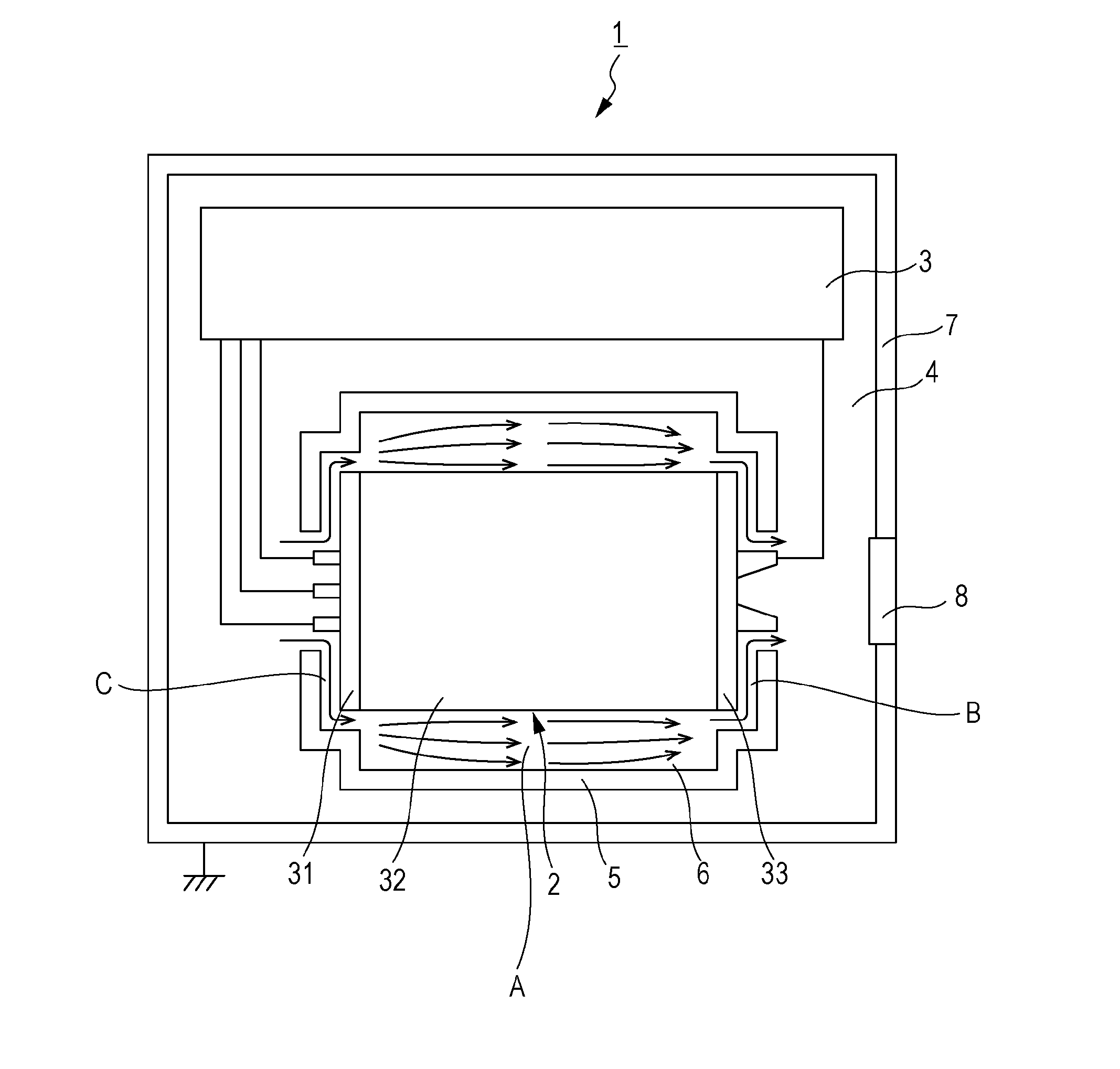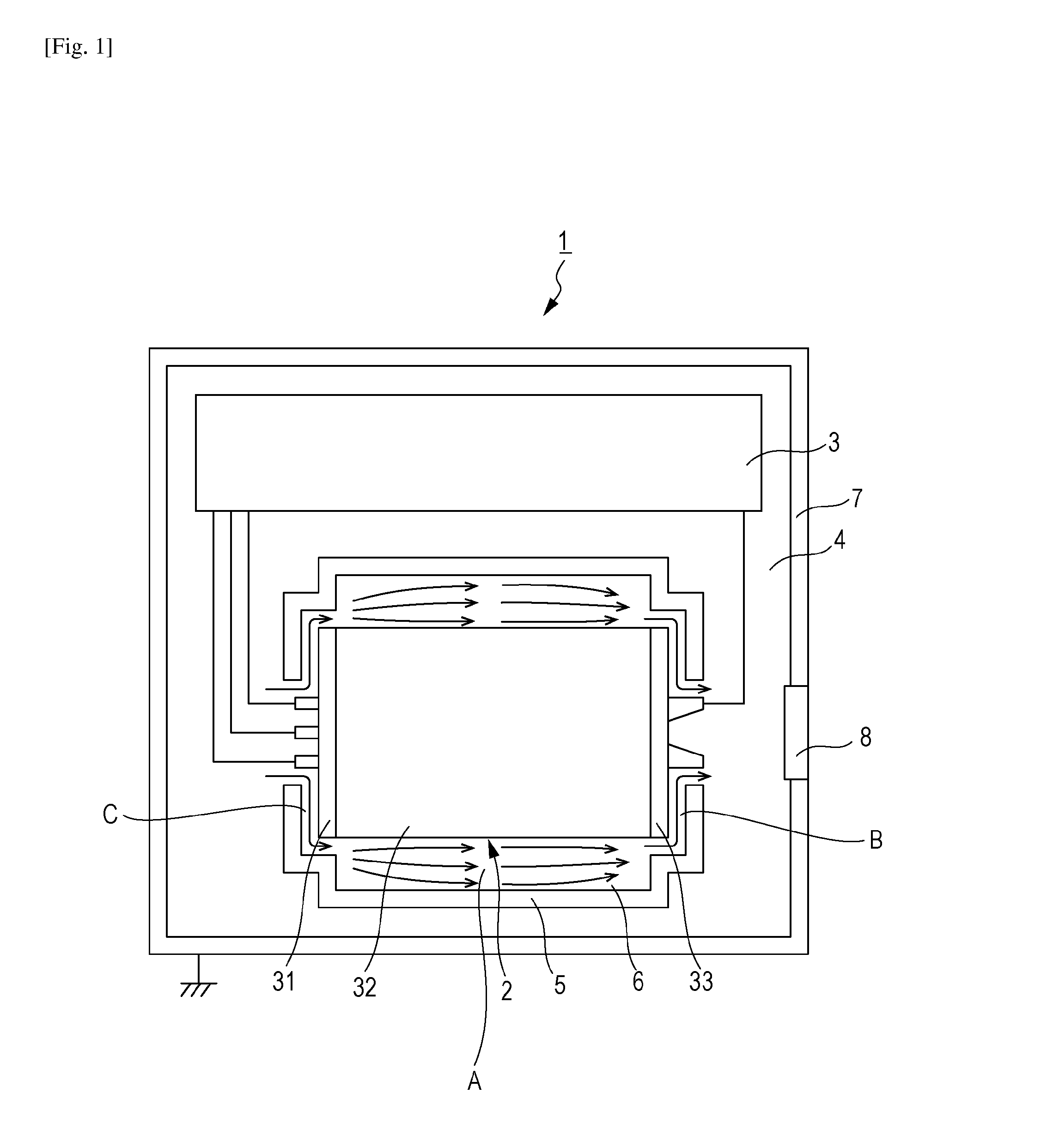Radiation generating apparatus and radiation imaging system
- Summary
- Abstract
- Description
- Claims
- Application Information
AI Technical Summary
Benefits of technology
Problems solved by technology
Method used
Image
Examples
example 1
[0046]Referring to FIG. 5, a radiation tube 2 and an outer tube 5 according to Example 1 will now be described.
[0047]Major dimensions of the radiation tube 2 according to Example 1 were as follows: the outside diameter of the tubular member 32 was 50 mm, and a length (L3) of the radiation tube 2 inclusive of the cathode 31 and the anode 33 was 80 mm. The tubular member 32 was chiefly made of alumina ceramic. The cathode 31 was chiefly made of stainless steel. The anode 33 was chiefly made of stainless steel and copper.
[0048]Major dimensions of the outer tube 5 were as follows: a length (L4) was 100 mm, an inside diameter (L1) at each of portions thereof facing the cathode 31 and the anode 33, which were conductive members, was 60 mm, and an inside diameter (L2) at a portion thereof facing the tubular member 32 was 70 mm. The outer tube 5 was made of acrylic resin with a thickness of 5 mm.
[0049]In the above configuration, the gap 6 was provided between the outer tube 5 and the radiat...
example 2
[0052]Another radiation generating apparatus 1 was prepared. The radiation generating apparatus 1 was the same as that of Example 1, except that the outer tube 5 illustrated in FIG. 3 was employed. Major dimensions of the radiation tube 2 were the same as those employed in Example 1. The outer tube 5 was fabricated such that the length (L4) was 100 mm, and the inside diameter was gradually increased from each of two ends thereof toward a central part thereof. Specifically, the inside diameter (L1) at the ends of the outer tube 5 facing the cathode 31 and the anode 33, respectively, was 60 mm, and the inside diameter (L2) at a portion of the outer tube 5 facing the central part of the tubular member 32 was 70 mm.
[0053]In the above configuration, the gap 6 was provided between the outer tube 5 and the radiation tube 2 such that the gaps B and C were each 5 mm and the gap at the central part of the tubular member 32 was 10 mm, whereby the cross-sectional area of the passage for the ins...
PUM
 Login to View More
Login to View More Abstract
Description
Claims
Application Information
 Login to View More
Login to View More - R&D
- Intellectual Property
- Life Sciences
- Materials
- Tech Scout
- Unparalleled Data Quality
- Higher Quality Content
- 60% Fewer Hallucinations
Browse by: Latest US Patents, China's latest patents, Technical Efficacy Thesaurus, Application Domain, Technology Topic, Popular Technical Reports.
© 2025 PatSnap. All rights reserved.Legal|Privacy policy|Modern Slavery Act Transparency Statement|Sitemap|About US| Contact US: help@patsnap.com



